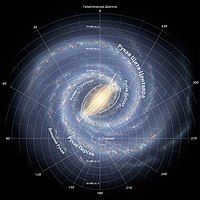
Table of Contents
Origin
The term Milky Way is commonly used in Western culture and is a translation of the Latin term via lactea, meaning “milky way”, which itself is a translation of the Greek term ϰύϰλος γαλαξίας, meaning “milky circle” [16]. The term Galaxy is derived from the ancient Greek word γαλαϰτιϰός, meaning “milky”. According to Greek mythology, Zeus wanted to make his son Heracles, who was born to a mortal woman, immortal. To achieve this, Zeus brought Heracles to his sleeping wife Hera so that he could drink her divine milk. However, when Hera woke up and realized what was happening, she pushed Heracles away, causing the milk to splash out and form the Milky Way.
During the time of Soviet astronomy school, the galaxy known as the Milky Way was commonly referred to as “our Galaxy” [17] or “the Milky Way system”. The term “Milky Way” [18] was used specifically to describe the stars that are visible and create the appearance of a milky band for observers.
There are numerous alternative names for the Milky Way in various languages. The term “Way” is often retained, while the term “Milky” is substituted with different descriptive words.
Structure
Size
The Milky Way is approximately 30,000 parsecs in diameter, which is equivalent to around 100,000 light-years or 1 quintillion kilometers. It has an estimated average thickness of about 1,000 light-years. Scientists from the Canary Institute of Astrophysics have conducted a statistical analysis of data collected from the APOGEE and LAMOST missions and have determined that the diameter of the Milky Way disk is approximately 200,000 light-years [19].
Number of stars
The galaxy is believed to contain anywhere between 200 and 400 billion stars, according to current estimates. These stars are predominantly arranged in a flat disk shape. Additionally, the Milky Way Galaxy is also home to an estimated 25 to 100 billion brown dwarfs [20].
Mass
While it is challenging to precisely calculate the mass of the Milky Way, the majority of its mass is not found in stars and interstellar gas. Instead, it is located in the non-luminous dark matter halo.
As of January 2009, the mass of the Galaxy was estimated to be approximately 3⋅10 12 solar masses [21], which is equivalent to 6⋅10 42 kg.
However, a more recent estimate from May 2016 by Canadian astrophysicists suggests that the mass of the Galaxy is significantly lower, at around 7⋅10 11 solar masses [22].
Disk
In the 1980s, astronomers put forward the idea that the Milky Way is not just a regular spiral galaxy, but a junction spiral galaxy [24]. The accuracy of this hypothesis was finally confirmed in 2005 by the Lyman Spitzer Space Telescope, which revealed that the central junction of our galaxy is actually larger than previously believed [25].
According to scientists, the galactic disk surrounding the galactic center has a diameter of approximately 100,000 light-years [26]. In comparison to the halo, the disk exhibits a noticeably faster rotation. The rate of rotation is not consistent at varying distances from the center. It rapidly accelerates from zero at the center to 200-240 km/s at a distance of 2,000 light-years, then slightly decreases, increases again to a similar value, and then remains relatively constant. By studying the rotational characteristics of the disk, researchers were able to estimate its mass, which is found to be 150 billion times greater than the mass of the Sun (M☉).
In close proximity to the plane of the disk, there exists a concentration of youthful stars and clusters, with an age that does not exceed a few billion years. These entities constitute what is commonly referred to as the flat component. Among them, there are numerous luminous and high-temperature stars. Additionally, the gas within the Galaxy disk is primarily concentrated near its plane, although its distribution is not uniform. This non-uniformity results in the formation of numerous gas clouds, ranging from immense clouds with heterogeneous structures that span thousands of light-years, to smaller clouds no larger than a parsec.
In the outer regions of the Milky Way, the stellar disk takes on an S-shaped form that gradually transforms into a twisted spiral structure [27] [28] [29].
Researchers from the Australian National University have determined that the intensity of the magnetic field within the Milky Way disk falls within the range of 15 to 20 μG (microgauss) [30].
The Core
Located in the central region of the Galaxy is a dense area known as the bulge, which spans approximately 8300 parsecs (equivalent to 27,000 light-years). The galactic nucleus is positioned towards the Sagittarius constellation (α = 265°, δ = -29°) [31] [32]. The distance from the Sun to the Galactic center is 8.5 kiloparsecs (equivalent to 2.62⋅10 17 km, or 27,700 light-years). It is believed that at the center of the Galaxy, there exists a supermassive black hole referred to as Sagittarius A* (with a mass of approximately 4.3 million M☉ [33]). This black hole is believed to be orbited by a medium-mass black hole [34] weighing between 1000 to 10,000 M☉, with an orbital period of roughly 100 years. Additionally, there are several thousand smaller black holes [35]. The combined gravitational influence of these black holes on neighboring stars results in the stars moving along unconventional paths [34]. It has been suggested that the majority of galaxies contain supermassive black holes at their cores [36].
The estimated length of the galactic jumper is approximately 27,000 light years[24]. This jumper traverses the galaxy’s center at an inclination of 44 ± 10 degrees relative to the line connecting our Sun and the galaxy’s center. It is primarily composed of red stars, which are believed to be exceedingly ancient. Surrounding the junction is a ring known as the Five Kiloparsec Ring. Within this ring, the majority of the Galaxy’s molecular hydrogen is found, making it a highly active area for star formation within our Galaxy. If observed from the Andromeda Galaxy, the galactic junction of the Milky Way would appear as a luminous segment [37].
In 2016, a team of astrophysicists from Japan made an intriguing announcement – they had found another enormous black hole near the center of our galaxy, the Milky Way. This particular black hole is situated approximately 200 light-years away from the galactic center. The scientists observed a celestial object surrounded by a cloud, which spans an area with a diameter of about 0.3 light-years. The mass of this object is estimated to be equivalent to 100 thousand times that of our sun. Despite extensive research, the exact nature of this object remains uncertain. It could either be a black hole or another type of celestial entity [38].
In 2018, the Chandra X-ray Space Laboratory discovered 12 binary systems emitting low-mass X-rays at the Galactic Center. It is highly likely that one of the components in these systems is a stellar-mass black hole. According to the observations, there could be an estimated 10-20 thousand black holes located 1 parsec away (equivalent to 3.26 light-years) from the supermassive black hole, which is known as Sagittarius A* [39].
Sleeves: A New Look for Your Arms
The galaxy is classified as a spiral galaxy, indicating that it possesses spiral arms. These arms are situated within the plane of the galaxy’s disk. The disk itself is surrounded by a spherical halo known as the halo, and beyond that is a spherical corona. Our solar system is positioned approximately 8.5 thousand parsecs away from the center of the galaxy, near the galactic plane (with only a 10 parsec offset to the North Pole). Specifically, we are located on the inner edge of a spiral arm referred to as the Orion arm. Due to this location, the visual observation of the arm’s shape is not feasible. However, recent observations of molecular gas (CO) indicate that our galaxy features two arms originating from a bar in its inner region. Additionally, there are a couple more arms within the inner part of the galaxy. These arms then transition into a four-arm structure that can be observed in the outer regions of the galaxy using the neutral hydrogen line [40].
While the Milky Way’s disk is filled with gas and dust, which obstructs the passage of visible light, the spheroidal component lacks such elements. Star formation actively occurs in the disk, particularly in the spiral arms where density is higher. In the halo, star formation has ceased. Dispersed clusters are primarily found in the disk. The majority of the galaxy’s mass is believed to be made up of dark matter, creating a dark matter halo with a mass ranging from 600 to 3000 billion M☉. This dark matter halo is concentrated towards the galaxy’s center [43].
The stars and star clusters in the halo orbit around the galaxy’s center in highly elongated paths. Due to the somewhat random rotation of individual stars (i.e., neighboring stars can have velocities in any direction), the halo as a whole rotates very slowly.
Discovery of the Sun’s place in the celestial hierarchy
Various celestial bodies are organized into distinct rotational systems. Take, for instance, the Moon, which revolves around the Earth, or the satellites of the colossal planets, which form their own systems teeming with celestial bodies. At a higher echelon, the Earth and the other planets revolve around the Sun. This naturally led to the query: does the Sun, too, belong to an even grander system?
In the 18th century, the English astronomer William Herschel conducted the initial comprehensive examination of this inquiry. He meticulously tallied the quantity of stars in various sectors of the celestial sphere and made a remarkable discovery: a substantial circular formation in the expanse of the sky (later referred to as the galactic equator). This celestial divide bisects the firmament into two symmetrical halves and exhibits the highest concentration of stars. Additionally, it became evident that the proximity of a particular sky region to this circumferential line directly correlates with the abundance of stars it contains. Furthermore, it was determined that the Milky Way is situated precisely upon this celestial pathway. Consequently, Herschel postulated that all the stars we observe constitute a prodigious stellar system that possesses a pronounced flattened shape in relation to the galactic equator.
Initially, it was believed that all entities in the Universe were components of our Galaxy, although Kant proposed the idea that certain nebulae could be galaxies similar to the Milky Way. As early as 1920, there was a contentious debate regarding the existence of extragalactic entities (for example, the well-known Great Controversy between Harlow Shapley and Heber Curtis; Shapley defended the singularity of our Galaxy). Kant’s hypothesis was ultimately confirmed in the 1920s when Ernst Epic and Edwin Hubble successfully measured the distance to various spiral nebulae and demonstrated that, based on their distance, they cannot be part of our Galaxy.
Position of the Sun within the Galaxy
Based on the most recent scientific calculations, it is believed that the Sun is located approximately 27,000 ± 1,400 light-years from the galactic center. However, initial estimations suggest that our star should be around 35,000 light-years away from the central hub. This indicates that the Sun is situated closer to the outer rim of the galaxy’s disk, rather than its core. Alongside other celestial bodies, the Sun orbits the galactic center at a velocity of 220-240 km/s [44], completing one full revolution every 200 million years. As a result, throughout its entire existence, the Earth has only completed approximately 30 rotations around the galaxy’s central hub.
The velocity of the Sun’s rotation around the Galaxy’s center closely matches the velocity of the compression wave that creates the spiral arm. This is an uncommon occurrence for the entire Galaxy: the spiral arms rotate uniformly, like spokes on a wheel, while stars move with varying regularity [45]. As a result, the majority of stars within the disk are situated within the spiral arms and eventually move out of them. The only area where the velocities of stars and spiral arms align is known as the corotational circle, and it is within this circle that the Sun is positioned.
For our planet, this fact is of utmost significance as the spiral arms contain tumultuous phenomena that generate intense radiation, posing a grave threat to all forms of life. No atmosphere, no matter how robust, could shield against this perilous onslaught. However, our planet occupies a comparably tranquil niche within the vast expanse of the Galaxy and has remained unscathed by these cosmic cataclysms for countless millions, if not billions, of years. It is plausible that this fortuitous circumstance has facilitated the emergence and endurance of life on Earth.
Residential Area
There might still exist undetected small galaxies that are dynamically linked to the Milky Way, as proven by the discovery of nine new satellite galaxies of the Milky Way in a relatively small section of the night sky in 2015 [46]. Additionally, there are some small galaxies that have already merged with the Milky Way, like Omega Centauri [47].
In 2014, scientists revealed that most of the Milky Way’s satellite galaxies are actually located in a very large disk and orbiting in the same direction [48]. This finding was unexpected: according to standard cosmology, satellite galaxies should form in the halo of dark matter and be widely dispersed, moving in random directions. The explanation for this discrepancy is still not fully understood [49].
Evolution and the future
A group of astronomers conducted a study on the movement of 30,000 stars within the Milky Way galaxy. Their findings revealed that approximately 10 billion years ago, the Milky Way merged with a larger galaxy known as Gaia-Enceladus, resulting in the formation of a thick disk and giving the Milky Way its current inflated shape [50]. Gaia-Enceladus was significantly smaller in size compared to the modern Milky Way, but during the cataclysmic event, the size ratio was 1 to 4, meaning the Milky Way was much smaller at that time. In terms of mass, Gaia-Enceladus was slightly more massive than the Small Magellanic Cloud, which exists in the present day [51] [52].
Potential future collisions between our Galaxy and other galaxies, such as the Andromeda Galaxy, are a possibility. However, making specific predictions is currently not feasible due to the unknown transverse velocity of extragalactic objects.
Based on data released in September 2014, a particular model predicts that in 4 billion years, the Milky Way will “merge” with the Large and Small Magellanic Clouds, and in 5 billion years, it will be merged into the Andromeda Nebula [54]. Another set of calculations suggests that the galaxies will collide tangentially in 4.5 billion years [55].
Scientists from the Institute of Computational Cosmology at Durham University have calculated that the Large Magellanic Cloud, which is currently moving away from the Milky Way, will eventually reverse its course and head towards the center of our Galaxy in approximately 1 billion years. This will lead to a merger between the two galaxies that will last for approximately 1.5 billion years. As a result of this collision, the size of the central object of our Galaxy, Sagittarius A*, will increase by a factor of 10. In about 2 billion years, the Solar System may be ejected from our Galaxy and into intergalactic space as a consequence of this event [56] [57] [58].
100,000 Stars – Google’s Innovative Initiative to Render the Milky Way galaxy
We are all aware that our galaxy is commonly known as the Milky Way. To be more precise, it was initially designated as such due to its visible sections in the nocturnal firmament – those spiral arms of the galactic structure that are observable from our planet. Nevertheless, what connection does our galaxy have with dairy products, and how is it referred to in various nations? Today, we will explore this topic collectively.
The Naming of Our Galaxy – Milky Way
The name of our galaxy, the Milky Way, has its origins in the ancient Greek myth of Hercules. This name is not unique to Russia; it is also used in most English-speaking, European, and American countries. According to the myth, Zeus, the father of Hercules and the supreme god, wanted to grant his son divine powers. To accomplish this, Zeus decided to give Hercules the milk of a goddess. One night, while Hera, Zeus’ wife, was sleeping, he brought the infant Hercules to her. However, Hera was not pleased with this idea and pushed the child away. As a result, her milk splashed into the sky, forming a bright circular trace that we now know as the Milky Way.
That’s why our galaxy was originally known as the “Milky Circle” or “galaxias kyklos” in ancient Greek. The term “Circle” later transformed into the modern “path” when it was adopted into Latin. In Latin, the myth was reinterpreted and the streak of the goddess’s milk in the sky was referred to as the “via” – a way or a road. By the way, you may have already noticed that the word “galaxy” itself originates from the Greek word for milk. The Christian Church, along with Latin and Ancient Greek as scientific languages, played a role in spreading the term “Milky Way” to languages worldwide.
Alternative names for our galaxy
However, the universe and its history extend beyond the ancient Greek era and Europe. As a result, our galaxy has been given various names. For instance, you may be aware that in Ukrainian, the Milky Way is referred to as “Chumatskiy shlyah (path)” in honor of the Chumak traders from long ago. These traders journeyed from north to south in search of fish and salt, using the starry streak in the sky as their guide. It was not until Galileo Galilei invented the telescope that people discovered the Milky Way is composed of countless stars. Since then, people from all corners of the globe have come up with a multitude of names for this radiant celestial band.
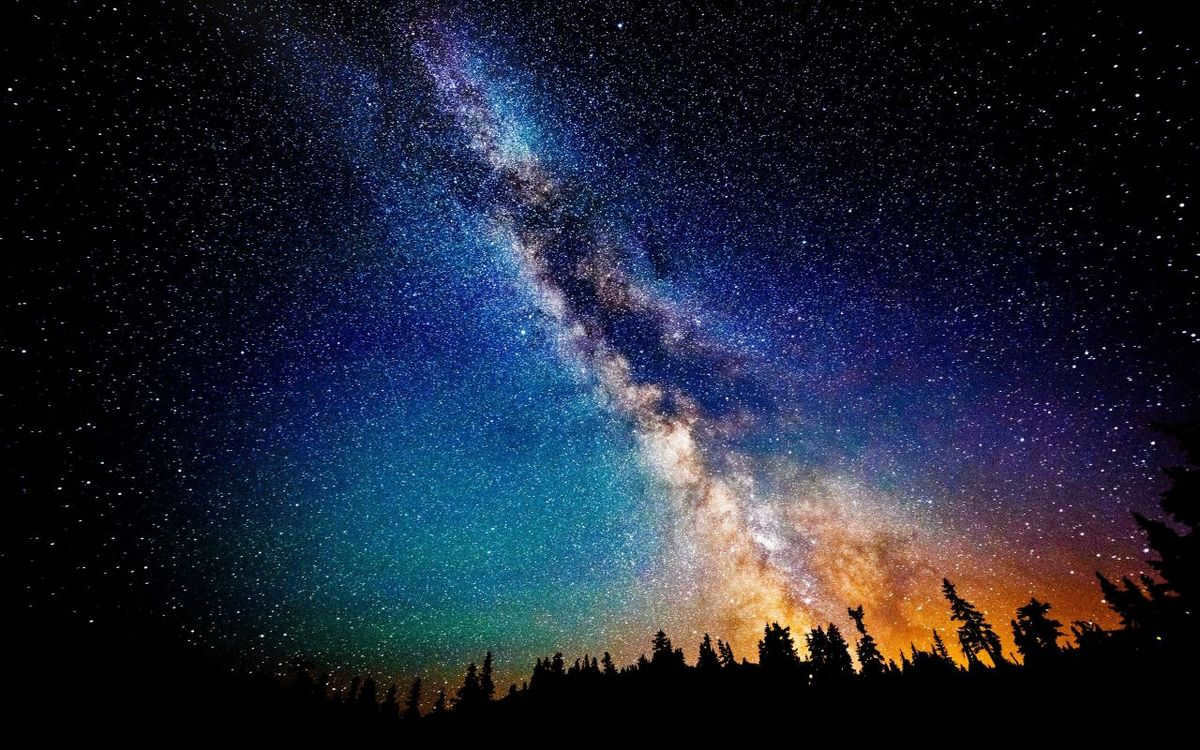
When it comes to finding a soul mate, the law of attraction operates just as reliably as the laws of math and physics. In essence, the force that brings two lovers together is no different from the force that pulls a falling apple towards the ground.
However, this principle of love doesn’t always work instantly, as the beginning of a relationship is akin to the force of gravity that can only be felt through exertion.
Therefore, taking initiative and making competent moves can increase your chances of finding the perfect partner. On this website, we aim to provide you with magical tips and tricks that will enable you to enchant and seduce a potential companion on a single date.

Creating a lasting impression on someone can only happen once. This is particularly true for women, as they tend to have strong personal boundaries when it comes to dating. Overcoming these barriers is not easy, but there are several psychological techniques that can help you win over your chosen partner. Interested in learning how to attract women? Then visit teatr-raduga.ru – where you can find content specifically tailored for men.
Women are drawn to good listeners
This rule has stood the test of time and, surprisingly, still holds true! It’s not just about giving compliments and making sweet remarks, but also about the overall style of communication. While shyness and modesty may be encouraged in women, self-confidence always takes center stage in men.
Seize control and initiate a conversation around your selected individual: introduce yourself briefly and then hand the baton over to her, which she will then pass back to you. This is crucial for a first date.
You possess excellent listening skills
The focus should be on the action of “hearing” rather than simply “listening.” A meaningful conversation is a vital sign that your connection is thriving and has potential to develop further.

Attraction and allure
The essence of these qualities is hard to define as they vary based on individuality. One person may possess a great sense of humor and ease, another may have a beautiful smile or politeness, and yet another may be known for their straightforwardness. It’s important to discover your unique qualities and confidently showcase them – the opposite sex will undoubtedly appreciate your ability to be authentic.
Wit and flirtation
And if to be more precise – it’s playfulness. This characteristic always catches attention and calls for a response. In life, we are often stuck with the mask of restraint and seriousness, so why not take it off in front of someone who genuinely pleases us. The other person will also follow your lead, and your bond will become even stronger.
Nonverbal communication
Nonverbal communication can speak louder than words when it comes to showing attraction. Learning to recognize the signals from your partner and encouraging a positive response through your own actions is an art that can be honed over time.
For instance, always make sure to pay attention to the length of the gaze – let it linger just a fraction of a second longer than usual. Take note of how closely your hands are positioned to one another, how frequently each of you touches your hair, and how often you hold a smile for no apparent reason. All of these actions demonstrate interest and empathy.
A remarkable effect can be achieved by mirroring the gestures of your chosen partner on a regular basis.
Restraint and ethics
Contrary to the unfounded stereotype that good girls only fall for bad guys, being respectful and well-mannered plays a pivotal role in winning a girl’s heart. Regardless of how you analyze it, respect and manners are always in high demand when it comes to capturing a girl’s attention.
It doesn’t cost you anything to extend your hand to assist a lady when she’s getting out of a car or to open doors for her. Remember, women always notice the small details.
Expanding on the previous point, when it comes to courtesy and good manners, you can take things a step further by, for instance, presenting a lovely bouquet or arranging for a pre-arranged cab to pick up the woman and bring her to the meeting location. Going the extra mile with attentiveness is sure to leave a lasting impression on any woman.
Strategies for captivating a man during the initial encounter

When it comes to the first date, men often need a special approach. Especially when they know they are irresistible and can charm any woman. Stay alert and impress your date with clever seduction techniques.
Show your true self
Undoubtedly, modesty is attractive. But let your modesty shine through in your conversation, not in your appearance. Wear your best outfit and do your makeup with a focus on your lips – your date will be captivated and won’t be able to look away. And don’t forget to smile!
Sullen individuals tend to push others away at first sight, so it’s important to never display a bad mood when meeting your companion for the first time. Instead, let your encounter become a joyous moment for both of you. Don’t hold back on jokes and laughter – these are the most effective tools of charm.
Pretending to be modest
Now let’s discuss some tactics. Being laid-back is an appealing quality, but it should be displayed in moderation. Be both a femme fatale and a modest cinderella. For instance, when asked about personal or past experiences, maintain an air of mystery that the man will be eager to unravel.
Intellect and knowledge
Being able to showcase his extensive knowledge is quite an impressive feat when it comes to earning respect from the opposite sex. Does he see himself as an alpha male who expects everyone to submit to him? Well, you can easily put him in his place by engaging him in discussions about intellectual topics and sharing your vibrant life experiences.

Appropriate conduct
Expressing one’s sexuality and aggression through body language can serve as an unpleasant surprise for your partner. As mentioned earlier, many individuals appreciate an element of mystery. It is possible to present everything that is on your mind in a more refined manner. To achieve this, simple unspoken gestures are sufficient: frequently touching your hair, gazing for a prolonged period, and offering a slight smile.
Flirting as a means of provocation
An additional method of generating interest in yourself is by challenging the other person. Refuse to comply with their requests, such as dancing, holding hands, or going somewhere.
Unique intonation
The enchanting and captivating intonation of one’s voice can have a hypnotic effect on the individual they are trying to attract. This theory has been the foundation of numerous experiments and has ultimately been proven to be true.
The key is to vary the speed and pitch of the voice, ensuring that the speech does not come across as monotonous or dull. By utilizing the power of your intonation, you will quickly notice how attentively others will listen to you.
Since my childhood, I have always been mesmerized by the vast expanse of the universe, which has been quite challenging for me to comprehend. The concept of something without an end seemed unimaginable. Interestingly, not much has changed since then. 🙂 However, in order to grasp the concept as much as possible, I have extensively read literature on the subject and watched numerous documentaries on National Geographic. 🙂
During that period, I discovered the name of our galaxy. Now, let’s discuss it. 🙂
What is the official name of our galaxy?
The official name of our home planet is the Milky Way. You may have witnessed the celestial phenomenon known as the Milky Way in the night sky. Yes! That’s it, our home. 🙂 The origin of this intriguing name is intertwined with the myths of ancient Greece. According to legend, Hera, the mother of Hercules, refused to nurse her son with her breast milk. In a fit of rage, she spilled this milk, resulting in the formation of this stellar streak in the nocturnal firmament.
Only after numerous centuries did scientists realize that this stellar trail is none other than our galaxy. And our planet, along with the entire solar system, constitutes merely a minuscule fraction of it. When comparing the size of a galaxy to a beach, we are smaller than a grain of sand.
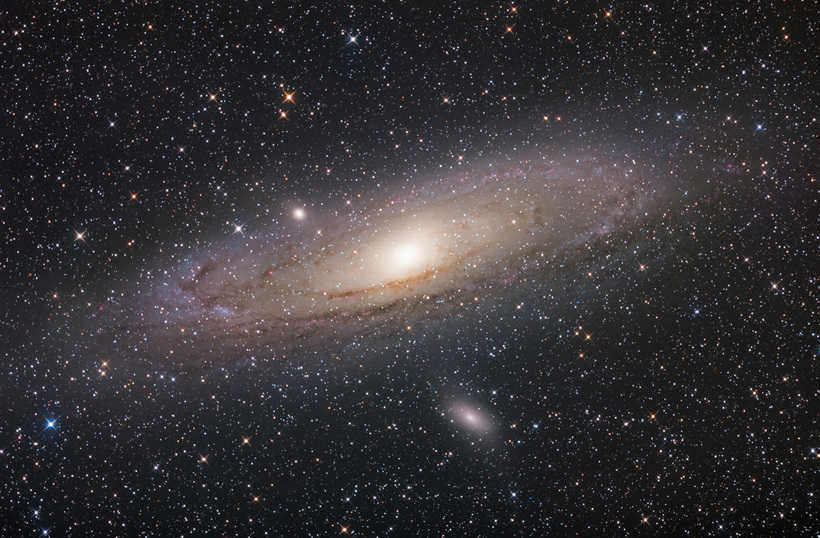
Scientists have been attempting to ascertain the structure and appearance of the Milky Way for many years. Despite being able to observe other galaxies using powerful telescopes, there are certain challenges in studying our own galaxy. Since we are located within it, we are unable to visually perceive its true form. Researchers have relied on mathematical and physical calculations to approximate the appearance of our galaxy.
During my research, I came across some intriguing information that is not widely known:
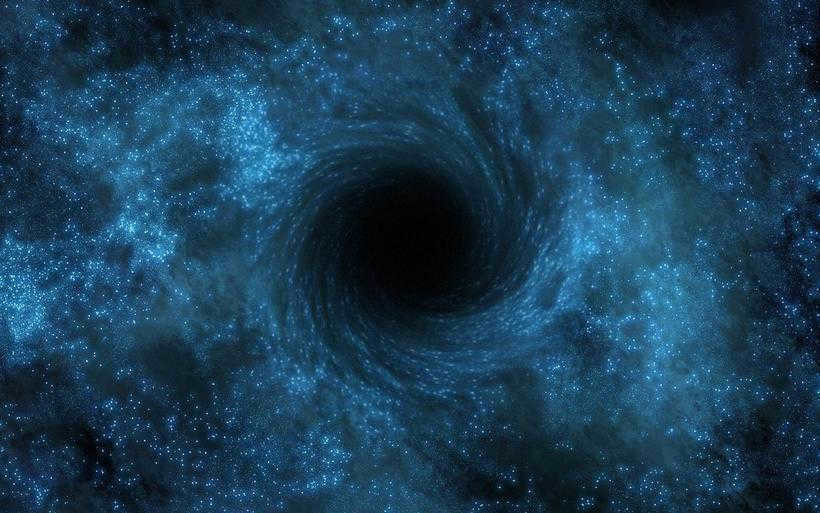
- A massive black hole is located at the center of our galaxy. It might sound a bit eerie, right? 🙂 However, it’s actually quite common as nearly all galaxies have a black hole at their core. Ours measures 22.5 million kilometers in diameter.
- The Milky Way is just a mere hundred million years younger than the entire universe. In the grand scheme of things, that’s relatively insignificant.
- We are in constant motion. Just like all other galaxies, our Milky Way is continually moving through space.
We all reside on Earth, a diminutive planet adrift in the boundless expanse of the cosmos. We all reside beneath the identical heavens that perpetually allure us. On a cloudless evening, one can witness myriad stars twinkling above, and who knows how countless billions of realms are concealed beyond the ethereal belt of the Milky Way? It is no surprise that humans have gazed skyward for millennia, yearning to decipher the enigma of the universe.
The individuals who study celestial bodies are referred to as astronomers. They propose the theory that our universe originated from an immensely powerful and unfathomable event known as the Big Bang. This occurrence took place approximately 15 billion years ago. Subsequent to the Big Bang, an extensive period of time passed before life emerged on Earth. Following this cataclysmic event, massive clusters of gas and dust materialized in the vast expanse of space. Many of these formations began to rotate rapidly, resembling swirling vortexes, and gradually grew hotter and denser until they transformed into luminous orbs of incandescent gases. This is the process by which stars came into existence.
The Galaxy is formed by a vast collection of stars in outer space. There are countless galaxies scattered throughout the universe, each with its own unique shapes and sizes. The specific galaxy that our Earth is located in is known as the Milky Way. When viewed from above, the Milky Way appears as a spiral. Our planet Earth is situated on one of the turns of this spiral, resulting in a mesmerizing milky white band that stretches across the sky on a dark night. This phenomenon is commonly referred to as the Milky Way.
Our Sun is not only a star, but it is also a relatively small one. Orbiting around it are nine planets, along with thousands of small asteroid planets and comets. Together, these celestial bodies make up the Solar System, with the Sun serving as its central figure. The natural satellites that orbit around the planets are known as moons. The Moon is the Earth’s natural satellite.
Each planet in our solar system has its own unique orbit around the Sun. The Earth, for example, hurtles through space at an astonishing speed of 108,000 kilometers per hour – that’s a thousand times faster than an airliner! In fact, it takes our planet just one year to complete a full revolution around the Sun.
There are four rocky planets that orbit very close to the Sun. They are Mercury, Venus, Earth, and Mars, and they are known as the terrestrial planets. These planets are primarily composed of rocks and metals.
Located between the terrestrial planets and the giant planets is a region called the asteroid belt.
The four large planets, located further away, are primarily composed of hydrogen and helium. These giant planets lack a solid surface, but possess extremely robust atmospheres. Jupiter, the largest of these planets, is followed by Saturn, Uranus, and Neptune. Each of these giant planets is accompanied by a multitude of satellites and magnificent rings. Saturn, in particular, boasts an exceptionally beautiful ring.
Pluto, the most recent addition to the solar system, is physically closer to the satellites of the giant planets.
Beyond the orbit of Pluto lies the Kuiper belt, also known as the second asteroid belt, which has been discovered relatively recently.
The solar system is not the sole planetary system in the vast expanse of the Universe. Over the past few years, scientists have identified over 50 planets orbiting stars in close proximity to our Sun.
It is possible to observe many of the planets without the need for binoculars or telescopes, simply using the naked eye: Venus, the brightest of the nine planets, shines with a captivating bluish radiance. Jupiter, on the other hand, emits a vibrant yellow glow. Mars displays a distinctive reddish hue, while Saturn presents itself in a serene gray-blue shade. Although the planets themselves do not emit light, we are able to perceive them due to their proximity to the Sun, which illuminates them.
During the summertime, I find solace in my countryside retreat, where, in the evenings, my mother and I take pleasure in gazing at the stars. Their luminosity is enchanting, drawing me in. One evening, as the sun had already dipped below the horizon, leaving behind a soft glow in the sky, I noticed an exceptionally radiant celestial body. My mother informed me that it was not a mere star, but the planet Venus. It is renowned for its exquisite beauty, captivating the gaze of mankind for countless millennia.
Venus is highly visible due to its brightness, which far exceeds that of the brightest stars. What sets Venus apart is its consistent white hue. It remains relatively close to the Sun in the sky, making it easily observable during sunset or sunrise.
The Sun is crucial for sustaining life on Earth. Without it, our planet would be a desolate and lifeless expanse. Ancient civilizations recognized the importance of the Sun and revered it as a deity. Today, we understand that the Sun is a star that illuminates and warms us. Its temperature ranges from 5,900 degrees on the surface to a staggering 15 million degrees at its core. Scientists have also discovered that the Sun emits various forms of radiation, in addition to light and heat.
Regardless of the number of scientists studying our solar system, the amount of unanswered questions remains constant. Our tiny Galaxy will continue to hold countless mysteries and marvels. I aspire to one day uncover even the smallest enigma in this incredible world. Remember to look up more often and marvel at these enigmatic stars.
The Milky Way Galaxy is truly majestic and breathtaking. It is our vast universe, our solar system. All the stars and other celestial bodies visible to the naked eye in the night sky belong to our galaxy. Although there are a few objects situated in the Andromeda Nebula, they are considered neighbors to our Milky Way.
Description of the Milky Way
The Milky Way Galaxy is vast, measuring 100,000 light years in size, and, as we are aware, one light year is equivalent to 9,460,730,472,580 kilometers. Our solar system is situated 27,000 light-years away from the central region of the galaxy, specifically in one of its arms known as the Orion arm.
Our solar system revolves around the central region of the Milky Way galaxy. This occurs in a similar manner to how the Earth orbits around the Sun. The solar system completes a full rotation every 200 million years.
Deformation
The shape of the Milky Way Galaxy is not uniform, as it appears to have a bulge at its center. It exhibits a distinctive deformation, resembling a wave-like pattern. On one side, the galaxy bends towards the north from its center, while on the other side, it curves downward and then turns to the right. This deformation can be attributed to the gravitational influence of the Small and Large Magellanic Clouds, which orbit the Milky Way at a rapid pace, as observed by the Hubble telescope. These two dwarf galaxies are commonly referred to as satellites of the Milky Way. Due to their significant mass and the presence of heavy elements, they form a gravitationally bound system that exerts a considerable force on the Milky Way. This tug-of-war between the galaxies causes vibrations, ultimately resulting in the deformation of our galaxy. The unique structure of the Milky Way also includes a halo.
Researchers hypothesize that the Magellanic Clouds will engulf the Milky Way in billions of years, and eventually it will be devoured by Andromeda.

Hello
Scientists have embarked on a quest to understand the nature of our galaxy, the Milky Way. In their investigations, they have made a fascinating discovery – approximately 90% of the galaxy’s mass is made up of dark matter, giving rise to a mysterious halo. Surprisingly, the luminous matter that is visible to the naked eye from Earth only accounts for about 10% of the total mass.
Extensive studies have provided strong evidence for the existence of the Milky Way’s halo. Scientists have developed various models, considering both the visible and invisible components. Through experimentation, it has been hypothesized that the absence of the halo would result in a slower motion of planets and other celestial objects within the Milky Way. This intriguing observation has led to the suggestion that the majority of the galaxy’s mass is comprised of invisible matter, known as dark matter.
Quantity of celestial bodies
The Milky Way galaxy is known for its exceptional nature. It possesses a distinctive structure, housing an astonishing number of over 400 billion stars. Notably, approximately one-fourth of these stars are massive. In contrast, other galaxies contain a smaller population of stars. For instance, the Cloud galaxy consists of about ten billion stars, while some others are comprised of a billion. The Milky Way, on the other hand, boasts an immense collection of 400 billion diverse stars, although only a fraction of around 3,000 stars are visible from Earth. It is challenging to determine the exact count of stars within the Milky Way, as the galaxy continuously loses celestial objects due to supernovae occurrences.
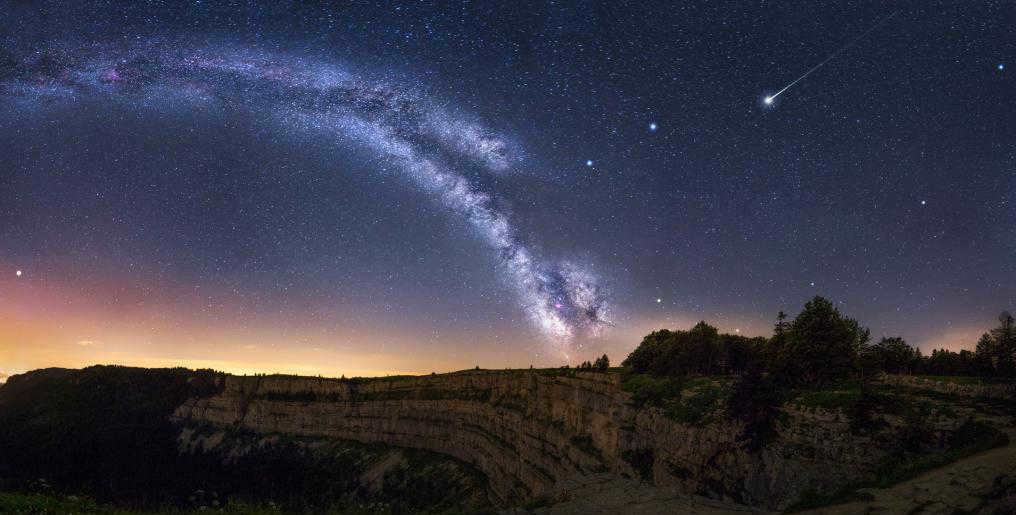
Gas and Particles
Approximately 15% of the composition of the galaxy consists of particles and gases. Is this the potential origin of the name “Milky Way” for our galaxy? Despite its massive size, we are only able to observe about 6000 light years into the distance, even though the galaxy stretches for 120000 light years. It might be larger, but even the most advanced telescopes are incapable of seeing beyond that point. The accumulation of gas and particles is the reason for this limitation.
The density of the particles prevents visible light from passing through, but infrared light can penetrate it, allowing scientists to generate maps of the celestial sky.
What came before
Scientists believe that our galaxy, the Milky Way, has not always been as it is now. It was formed through the merging of several other galaxies, which greatly impacted its size and shape. Even today, the Milky Way continues to capture planets from other galaxies. One example of this is the Big Dog, a dwarf galaxy located near our own. Periodically, stars from the Big Dog are added to our universe, while some of our stars may also migrate to other galaxies, such as the Sagittarius galaxy.
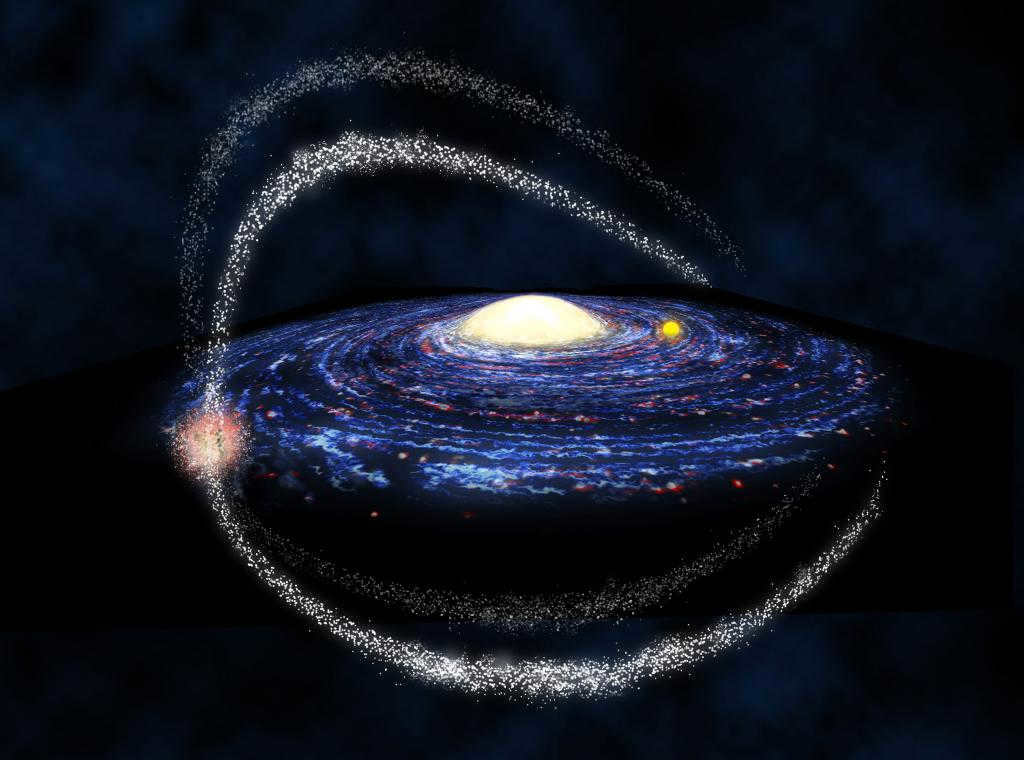
A Perspective on the Appearance of the Milky Way
Describing the precise appearance of our Milky Way galaxy from an overhead vantage point proves to be a challenge for scientists and astronomers alike. The reason for this lies in the fact that Earth is positioned a staggering 26,000 light years away from the galactic center. This particular placement renders it impossible to capture comprehensive images of the entire Milky Way. Thus, any depiction of the galaxy is either a representation of other observable galaxies or purely speculative. As a result, we are left to ponder the true visual nature of our galaxy. It is even conceivable that our current understanding of the Milky Way is comparable to the limited knowledge held by ancient civilizations who believed the Earth to be flat.
The core
The core of the Milky Way galaxy is known as Sagittarius A*, a significant emitter of radio waves, indicating the presence of an immense black hole at its center. Its dimensions are estimated to be slightly larger than 22 million kilometers, encompassing the hole itself.
All the material attempting to enter the black hole congregates to form an extensive disk, nearly 5 million times the magnitude of our Sun. However, even this gravitational pull does not hinder the formation of new stars at the periphery of the black hole.
Age
By analyzing the structure of the Milky Way galaxy, scientists have been able to estimate that it is approximately 14 billion years old. The oldest known star in the galaxy is over 13 billion years old. Calculating the age of the galaxy involves determining the age of the oldest star and the stages that occurred before its formation. Based on the available data, researchers have proposed that the universe itself is around 13.6-13.8 billion years old.
The formation of the Milky Way began with the creation of its bulge, followed by the development of its central region which eventually led to the formation of a black hole. Approximately three billion years later, a disk with spiral arms emerged. Over time, the structure of the galaxy underwent changes, gradually evolving into its current form around ten billion years ago.
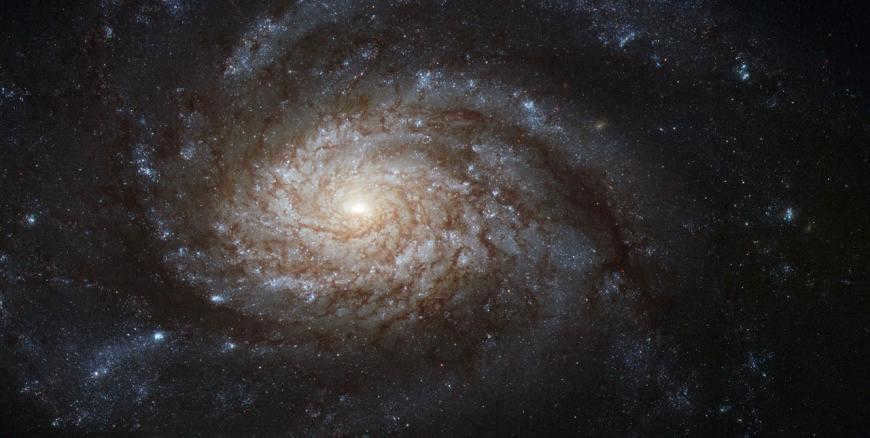
We are a component of a larger entity
Every single star within the Milky Way galaxy is an integral part of a vast galactic structure. Specifically, we belong to the Virgo Supergroup. In close proximity to the Milky Way, there exists a cluster known as the Virgo Supercluster, which comprises the Magellanic Cloud, Andromeda, and fifty other galaxies. A supercluster is an expansive collection of galaxies that spans a significant expanse. However, even the Virgo Supercluster is just a minute fraction of the much larger stellar neighborhood.
Spanning over an area with a diameter of more than 110 million light-years, the Virgo Supercluster encompasses more than one hundred groups of clusters. Furthermore, the Virgo cluster itself is merely a small constituent of the Laniakea supercluster, which, in turn, is part of the Pisces-Keith complex.
As it revolves around the Sun, our planet, Earth, completes a full orbit in one year. The Sun, in turn, rotates within the Milky Way galaxy, circling the galactic center. In relation to a specific type of radiation, known as relic radiation, our galaxy is constantly in motion. This relic radiation serves as a useful benchmark for calculating the velocity of various celestial objects within the vast expanse of the Universe. Extensive research has revealed that our galaxy rotates at an astonishing speed of 600 kilometers per second.
Origin of the Name
The name of this galaxy was derived from its distinct appearance, which resembles milk spilled across the night sky. It was originally named during ancient Rome and was referred to as “Via Lactea,” meaning “the road of milk.” Even today, it is commonly known as the Milky Way, as its name is evocative of the white ribbon-like band that stretches across the night sky, resembling spilled milk.
References to this galaxy can be traced back to the time of Aristotle, who believed that the Milky Way was the point of contact between the celestial and terrestrial spheres. Until the invention of the telescope, no significant additions were made to this understanding. It was only in the seventeenth century that people began to perceive the world in a different light.
Our Neighbors
Many people mistakenly believe that the closest galaxy to the Milky Way is Andromeda. However, this belief is not entirely accurate. Our nearest “neighbor” is actually the Big Dog galaxy, which resides within the Milky Way itself. It is situated approximately 25,000 light years away from us, and about 42,000 light years from the galactic center. Interestingly, the Big Dog galaxy is even closer to us than the black hole located at the center of our galaxy.
Prior to the discovery of the Big Dog, Sagittarius was considered our closest neighbor, followed by the Large Magellanic Cloud. The Big Dog galaxy is home to peculiar stars that possess an unusually high density within the M-class.
According to scientific theory, the Milky Way assimilated the Big Dog galaxy, engulfing all of its stars, planets, and other celestial objects in the process.
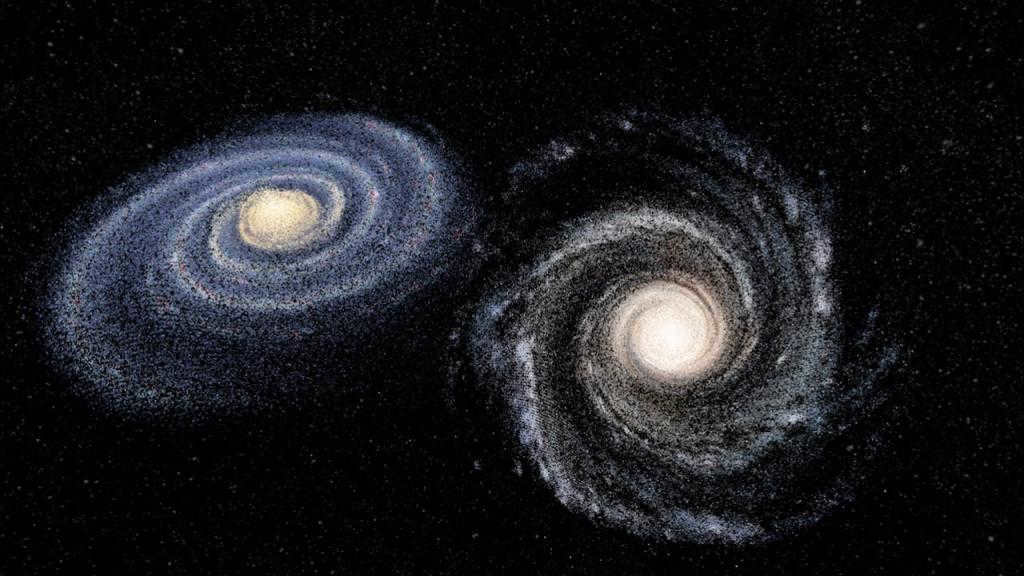
The Clash of Galaxies
Lately, there has been an increasing buzz about the impending collision between the Andromeda Nebula, the closest galaxy to the Milky Way, and our own universe. These two colossal entities came into existence around the same time, approximately 13.6 billion years ago. According to conventional wisdom, these giants should be drifting apart due to the expansion of the universe. However, defying all expectations, they are actually moving towards each other at a speed of 200 kilometers per second. It is estimated that in 2-3 billion years, Andromeda will collide with the Milky Way.
Astronomer J. Dubinsky has created a model of this collision, which is showcased in the following video:
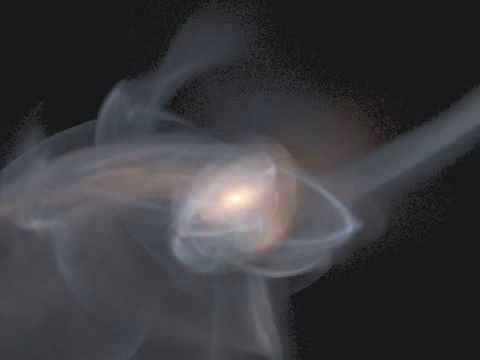
The collision will not result in a catastrophe of global proportions. And in a few billion years, a new system will emerge, featuring familiar galactic formations.
Extinct galaxies
A comprehensive study of the celestial sky, encompassing approximately one-eighth of it, has been conducted by scientists. By analyzing the star systems within the Milky Way galaxy, they have discovered previously unknown streams of stars located at the outer edges of our universe. These streams are remnants of small galaxies that were once obliterated by the force of gravity.
A telescope located in Chile has captured a vast array of images, enabling scientists to conduct a comprehensive analysis of the night sky. Based on this analysis, it has been determined that our galaxy is encompassed by a halo consisting of dark matter, sparse gas, and a limited number of stars. These remnants are the remnants of dwarf galaxies that were once absorbed by the Milky Way. By collecting a significant amount of data, scientists have successfully reconstructed a “skeleton” of these deceased galaxies. In a way, this process is akin to paleontology – with only a few bones, it is challenging to depict the appearance of a creature. However, with an ample amount of data, it becomes possible to piece together a skeleton and make educated guesses about the lizard’s characteristics. Similarly, in this case, the valuable information provided by the images has allowed us to recreate eleven galaxies that were assimilated by the Milky Way.
We are under attack
According to scientific research, hypervelocity stars within our galaxy did not originate within it, but rather in the Large Magellanic Cloud. The existence of such stars poses many unanswered questions for theorists. For instance, the concentration of hypervelocity stars in Sextant and Leo remains unexplained. After reevaluating the theory, scientists have reached the conclusion that such incredible speeds can only be achieved due to the influence of a black hole situated at the center of the Milky Way.
Recently, an increasing number of stars have been observed that exhibit no movement away from the center of our galaxy. By analyzing the trajectories of these superfast stars, scientists have determined that we are currently under assault from the Large Magellanic Cloud.
Death of a Planet
Scientists have witnessed the demise of a planet by observing planets within our galaxy. One particular planet met its end when it was engulfed by an aging star. As the star expanded and transformed into a red giant, it devoured the unfortunate planet in its path. Additionally, another planet within the same system experienced a shift in its orbit due to this cosmic event. This discovery has led scientists to speculate about the fate of our own Sun. Based on their observations, they predict that our Sun will undergo a similar transformation and become a red giant in approximately five million years.
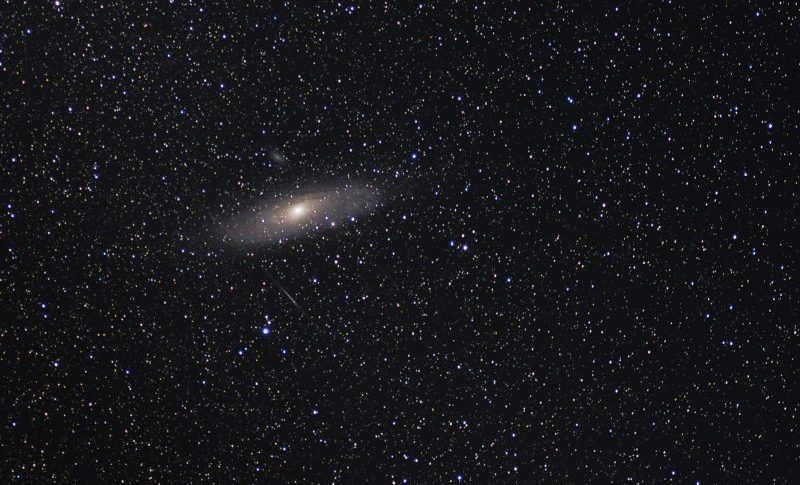
How the Milky Way operates
Our galaxy, the Milky Way, functions by rotating in a spiral pattern. At the center of the entire disk lies a massive black hole.
When we look up at the night sky, we can observe the galactic arms. These arms appear as white stripes, resembling a milky pathway filled with stars. These arms are essentially the branches of our Milky Way. They are most visible during clear weather in the warm season, when cosmic dust and gases are abundant.
The arms of our galaxy include:
- The Naugol branch.
- Orion. This arm contains our solar system and can be thought of as our “room” within the “house”.
- The Kiel-Sagittarius arm.
- The Perseus branch.
- The Shield branch of the Southern Cross.
Additionally present in the composition is the core, the gas halo, and unidentified material. It accounts for approximately 90% of the entire galaxy, while the remaining ten percent consists of observable entities.
Our solar system, along with Earth and other planets, form a unified entity within a massive gravitational system that is visible every night in a clear sky. Within our “home,” a multitude of processes constantly take place: stars are born and collapse, we encounter impacts from other galaxies, dust and gases, stars undergo changes and extinguish while others ignite, and orbits circle around. All of this occurs out there, in a distant universe that we have yet to fully comprehend. Who knows, perhaps there will come a time when humans will be capable of reaching other arms and planets within our galaxy in a matter of minutes, enabling travel to other universes.
The Galaxy, also known as the Milky Way, is a collection of two hundred billion stars that, along with the Sun, form the galaxy to which our planet belongs.
Furthermore, the Milky Way refers to the portion of the night sky (the luminous band) that contains the largest concentration of stars within the galaxy. It is only possible to observe individual stars within this whitish, silver streak with the aid of a telescope, as they are located at such great distances from Earth that they appear to blend together, resembling specks of dust in space.
Galileo was the first person to observe luminous clusters of stars in this cosmic “powder” or “milk”. His invention of the telescope completely transformed our understanding of the world, despite its initial imperfections.
The mythological origin of the Milky Way can be traced back to ancient Greece. According to Greek legends, Zeus, in an attempt to immortalize his son Heracles, who was born to a mortal woman, placed him at the breast of his slumbering wife Hera. Upon waking up, Hera, filled with rage, flung Heracles aside, causing her milk to spill and scatter across the celestial expanse, forming the beautiful starry tapestry that we now know as the Milky Way.
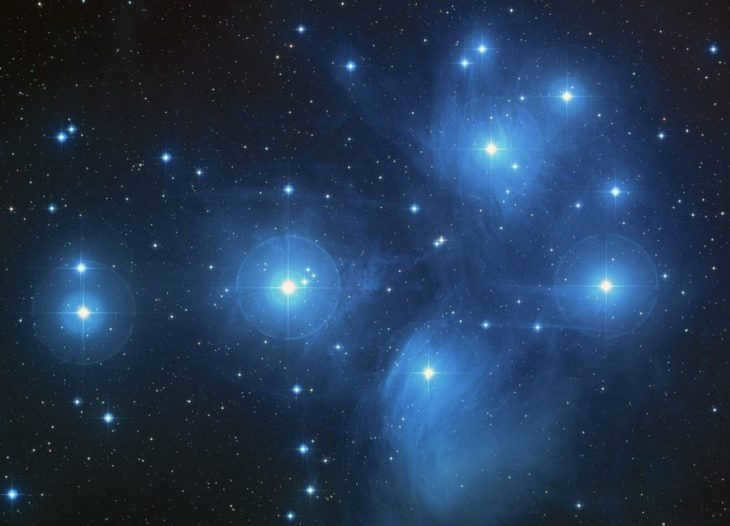
There are numerous galaxies in the universe, and the exact number is unknown to scientists, but it is estimated to be in the trillions! Galaxies are organized into clusters, referred to as supergalaxies, and there are currently 4,073 clusters that have been identified.
Within the Local Group of galaxies, which is part of the Virgo Supergroup, the Milky Way is one of three large galaxies and has forty dwarf galaxies.
Galaxy Classifications
There are four main classifications for galaxies that have been observed.
— Elliptical Galaxies. These galaxies are named after their shape, resembling a convex lens or ellipse. One unique characteristic of elliptical galaxies is their low concentration of interstellar dust and gases, which sets them apart from other types of galaxies. Elliptical galaxies make up approximately 15-20% of all known galaxies.
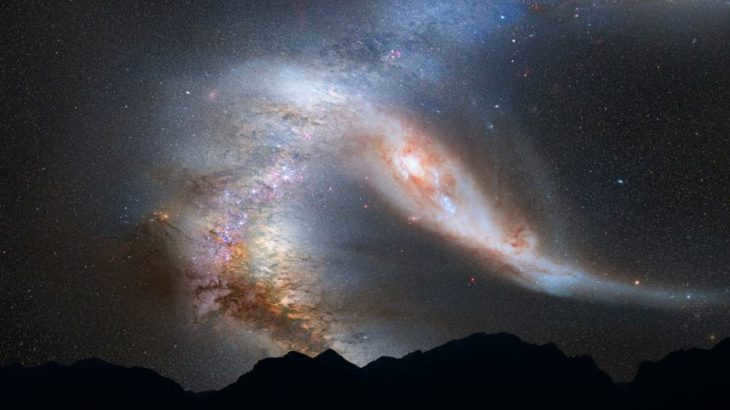
– Irregulars. Irregular galaxies are characterized by their unique shapes and are the second most common type of star cluster after dwarf galaxies. Each irregular cluster has its own distinct features, such as size, density, and structure.
– Dwarf. These galaxies are called dwarf because of their small size. The nearest dwarf galaxy is located in the Sagittarius constellation and can be seen with the naked eye, appearing like one of the stars. In a few billion years, it will merge with the Milky Way and become part of it.
– Spiral. This is the Milky Way galaxy. Spiral galaxies are named for their shape, which consists of several “arms” or bands of star clusters that are twisted around a central core in a flat body.
The Milky Way: A Spiral Galaxy
The immense size of the Milky Way can only be comprehended by considering the dimensions of its disk, which spans a diameter of 100 thousand light years. Our Sun, along with its solar system, resides within this disk, known as the Milky Way, with a distance of 28 thousand light years (or according to some estimates, 25 thousand light years) from the galactic center.
Enveloping our solar system is an interstellar cloud composed of warm dust and gas. Our system is situated within a specific region of this cloud, known as the “bubble.” This designation is due to the remarkable rarity within the region, essentially referring to its emptiness. In fact, our “bubble” has a density of just 0.001 atoms per cubic centimeter.
Similar to all other stars, the Sun completes a full revolution around the galactic core. This orbital period is referred to as a galactic year and lasts for 250 million Earth years for the Sun.
The star cluster that is closest in similarity to Earth is located 2 million light-years away. Astronomers are actively engaged in studying this cluster in order to gain a better understanding of the workings of the Milky Way. Currently, their knowledge is limited to speculation and the creation of virtual models.
It is rather unfortunate, my esteemed colleagues, to be unaware of the name of our very own galaxy… Even the most elementary of students possess this knowledge. Our celestial abode is known as the Milky Way. The name of our galaxy has been successfully replicated by various marketing professionals – from personal care items to confectioneries, products bearing the illustrious name “Milky Way” are widely available. For instance, there is the Milky Way chocolate bar or a range of cosmetics infused with milk extracts from a lesser-known company.
Where Can We Find Our Solar System?
Our solar system is located within the Milky Way, a spiral galaxy that is part of the Virgo Supergroup. When we look up at the night sky, we can see a path of twinkling stars that make up our home galaxy.
The center of the Milky Way lies in the constellation Sagittarius, and it is believed to host a massive black hole known as Sagittarius A. This cosmic monster is likely surrounded by a smaller black hole of average size, which orbits around it once every 100 Earth years. Additionally, there are thousands of smaller black holes that orbit around these two main black holes, influencing the movement of the stars in their respective orbits.
Our solar system is located on the outskirts of the Galaxy, which is why we perceive our Galaxy as a trail of stars in the night sky from Earth. The movement of our star around the center of the galaxy occurs approximately every 200 million years.
In the future, the Milky Way, our home galaxy, will collide with the nearby Andromeda Galaxy, which is known for its famous and brightest star, Sirius, a binary star system. Scientists predict that as a result of this galactic chaos, our solar system will be ejected and will drift freely through space for an unknown period of time, taking our planet, Earth, along with it. Whether the Earth will still be blue at that time remains uncertain….
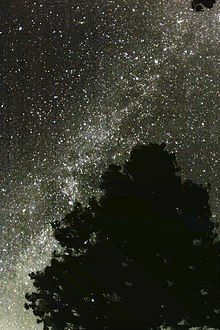
Legends and tales abound when it comes to the birth of the Milky Way, a dazzling constellation that graces the nighttime landscape.
Mythological Stories from Across the Globe
Armenian
In the ancient mythology of Armenia, the celestial entity known as the Milky Way was often referred to as “the path of the pilferer of straw”. According to the captivating legend, the deity Vahagn cunningly snatched straw from the powerful Assyrian ruler Barsham and transported it to the land of Armenia during the harsh winter season. As he swiftly escaped through the vast expanse of the heavens, he playfully scattered fragments of the stolen straw along his route.
The Koysan people from the Kalahari Desert in southern Africa have a legend that states that in the distant past, there were no stars and the night sky was as dark as can be. However, there was a young girl who felt lonely and desired to explore other places and meet new people. In order to fulfill her wish, she decided to take some smoldering embers and toss them into the sky. As a result of her actions, she created what we now know as the Milky Way, a beautiful band of light that stretches across the night sky.
Cherokee
A fascinating tale from the Cherokee tribe recounts the story of a mischievous dog who managed to steal some cornmeal. Once he had the cornmeal in his possession, he took off running towards the north, leaving a trail of scattered cornmeal behind him. This trail eventually became the Milky Way, and in the Cherokee language, it is referred to as ᎩᎵ ᎤᎵᏒᏍᏓᏅᏱ (Gili Ulisvsdanvyi), which translates to “Where the dog ran away”.
Eastern Asia

The origin of the name Milky Way can be traced back to the celestial phenomenon known as the Celestial River. This mythological story is related to the Shepherd and the Weaver.
In East Asian cultures, the Milky Way was believed to be the “Silver River” of Heaven. This term is referred to as “銀河” in Chinese, “Eunha” in Korean, and “ginga” in Japanese. According to one legend, Altair and Vega, two stars, represented two lovers who could only meet once a year on the seventh day of the seventh month. On this day, a bridge made of magpies and crows would form over the galactic river, allowing them to reunite. This celebration is known as Qi Xi in Chinese, Chilsok in Korean, and Tanabata in Japanese.
Egyptian
In the mythology of ancient Egypt, the Milky Way was revered as a celestial manifestation of cow’s milk. It was revered as the divine embodiment of fertility, known as Bat, who later became merged with the goddess Hathor, the deity of the sky.
Finno-Ugric
Among the Finns, Estonians, and other related peoples, the Milky Way was known as the “Way of the Birds” (Finnish: Linnunrata, Estonian: Linnutee). They observed that migratory birds used the galaxy as a navigational guide during their journey south, as they believed it led them to Lintukoto, the mythical homeland of birds.
The meaning of the name in the Indo-European Baltic languages remains unchanged (Lithuanian: Paukšči Takas, Latvian: Putnu Ceļš).

Jacopo Tintoretto’s artwork, “Origin of the Milky Way,” portrays the creation of the Milky Way.
Origin in Mesopotamia
The Babylonian epic poem, Enma Elish, tells the story of the Milky Way’s origin. It explains that the Milky Way was formed from the severed tail of the ancient sea dragoness named Tiamat. Marduk, the Babylonian national god, killed Tiamat and placed her tail in the sky. It was believed that this myth was inspired by an older Sumerian version in which Tiamat is killed by Enlil of Nippur. However, it is now known that the Babylonians created this story as propaganda to establish Marduk’s superiority over the Sumerian deities. The myth of Labbu is also portrayed in a similar manner.
Ancient Greek and Roman Mythology
In ancient Greek and Roman mythology, the Milky Way was referred to as Galaxias, derived from the Greek word for “milk” – galas. According to one legend, the creation of the Milky Way is attributed to the heroic figure Hercules. As a baby, Hercules was the son of Zeus and a mortal woman named Alcmene. In an act of love, Zeus allowed the infant Hercules to nurse on the divine milk of his wife Hera while she slept. This act bestowed upon Hercules divine qualities. However, when Hera awakened and discovered she was nursing an unknown child, she pushed him away. The milk that spurted out from Hera’s breast became the luminous band of stars we now know as the Milky Way.
Yet another variation of the legend suggests that Heracles (also known as Hercules in Roman mythology) was abandoned in the woods by his mortal parents, Amphitryon and Alcmene. Heracles, the son of Zeus and Alcmene, was naturally favored by his father, who dispatched Athena, the Greek goddess of wisdom, to retrieve him. However, Athena, not being particularly maternal, decided to bring him to Hera to be nursed. Hera reluctantly agrees to breastfeed Heracles, but when he bites down on her nipple, she pushes him away in pain. The milk that spews forth from her breast forms what we now know as the Milky Way.
Hindu
In the Bhagavata Purana, a collection of stories in Hinduism, the stars and planets in the sky are compared to a dolphin swimming in water. The heavens are referred to as śiśumãra cakra, which translates to “the dolphin’s disk.” The Milky Way is depicted as the dolphin’s belly and is known as Akasaganga, or “the river Ganges in the sky.”
In Hindu mythology, it is believed that Vishnu meditates on Shesha, a divine serpent, along with his consort Lakshmi in the Kshira Sagara, also known as the Sea of Milk.
Irish People
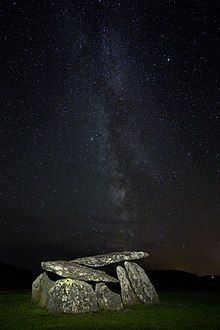
The Altar wedge tomb, dating back to around 2500-2000 BCE, can be found in Ireland, beneath the stunning view of the Milky Way.
In the rich mythology of Ireland, the Milky Way was known as Bealach na Bó Finne, also known as the Way of the White Cow. This celestial phenomenon was believed to be a reflection of the sacred river Boyne, which was referred to as “The Great Silver Yoke” and “The White Brain of Fedlimid,” both of which can also be used to describe the Milky Way. (Mor Chuing Argait, Smyr Find Fedlimty).
- Séann Cine – meaning “main chain.”
- Síog na Spéire – meaning “strip of sky.”
- “Earball na Lárach Báine – Tale of the Pale Mare. The Lárach Báine (pale mare) is regarded as a relic of the supreme goddess of power, and processions involving the pale horse were once held in County Kerry during Samhain (Halloween).”
- “Clay Mor on Realtai – ‘The Grand Trench / Star Fence'”
- “Sgriob Hlann Uisnich – ‘A path of children from Uisnich.’ This name originates from a legend: after the sons of Uisnech perished in battle, Deirdre threw herself into their grave. The enraged King Conchobar mac Nessa unearthed the bodies and buried them separately, but a tree emerged from each grave and their branches intertwined. He then commanded them to be excavated once again and buried on opposite sides of the lake; however, a magnificent cluster of stars appeared in the sky, connecting the two graves.”
In Hungarian folklore, Csaba, the legendary offspring of Attila the Hun and progenitor of the Hungarian people, is said to have journeyed along the Milky Way at a time when the Sekeli (an ethnic group of Hungarians residing in Transylvania) faced danger. Because of this, the Milky Way is referred to as the “Path of Warriors” (also known as the “Path of Armies”) in Hungarian folklore: Hadak Útja. According to the myth, the stars in the sky are believed to be sparks emanating from horseshoes.
Maori
The Maori people believe that the Milky Way represents their ancestral canoe, known as a waka. In their mythology, the front of the canoe is represented by the constellation Orion, while the back is represented by Scorpius. The Southern Cross and Pointers symbolize the anchor and rope of the canoe. According to the legend, a man named Tama-reti once found himself far from home as night fell. In those days, there were no stars, and the darkness was filled with dangerous creatures known as Taniwa, which would attack and devour people. To protect himself, Tama-reti floated his canoe down a celestial river, causing rain, and scattered shiny pebbles from the lakeshore into the sky. The sky god, Ranginui, was pleased with this act and lifted the canoe into the heavens, creating the stars as a reminder of Tama-reti’s bravery.
Ancient Astronomy of the Indigenous People of Australia
The Indigenous peoples of Australia had a sophisticated understanding of astronomy, with many of their mythologies and cultural practices revolving around the stars, planets, and their movements across the sky. They also utilized the stars for navigation across the vast continent.
The Kaurna people, who inhabit the Adelaide Plains in South Australia, perceive the Milky Way as a celestial river. They refer to it as Wodliparri, which translates to “river of huts” in their language. According to their beliefs, the river is dotted with numerous campfires. The Kaurna also associate dark patches in the Milky Way with the dwelling place of a fearsome creature called the Yura. These patches are known as Yurakauwe, meaning “monstrous water.”
Another Aboriginal group from the Cape York region in Queensland interprets the streak of light in the sky as termites that were lifted into the heavens by their ancestral hero, Burbuk Boon.
To the south, the cluster of stars that form the Milky Way is observed as numerous bats carrying off a performer named Purupriggi.
The Aranda or Arrernte individuals, hailing from Central Australia, perceive the Milky Way as a celestial river or stream. This stellar river separates the two major encampments of the Aranda and Luritja communities. The stars located to the east of this river signify the Aranda encampments, while the stars to the west represent the Luritja encampments, and a few stars closer to the band symbolize a fusion of both.
In the Kimberley region of Western Australia, the Indigenous people refer to the Milky Way as “Iowara” and envision it as the manifestation of a colossal, elongated emu.
Related Articles
Sources
Recommended Reading
- Rick Riordan, John Rocco, Disney Hyperion (2015) Hercules does twelve foolish acts. In Percy Jackson’s Greek heroes (pp. 259-329). New York, NY: Los Angeles
Useful Links
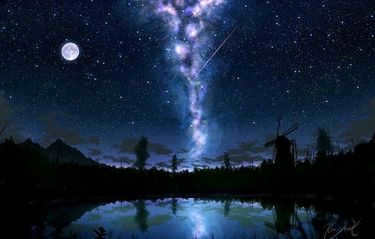
Milky Way – The galaxy that we erroneously claim as our exclusive property. In actuality, it serves more as a statement of purpose, since no one has observed the Milky Way from a vantage point above and is unable to establish ownership without a comprehensive catalog of stars or clearly defined borders.
Structure [ edit ]

Based on a widely accepted belief, it has been agreed upon by rural communities for generations that the Milky Way is made up of milk accidentally spilled, clouds of gas and dust stirred up by a celestial herd of cows, and star-powered streetlights.
The exact composition of the milk is not clearly defined, but based on the diversity of the Milky Way, it can be concluded that the milk is not soy milk, but rather natural milk. The Milky Way contains various formations of sourdough, cottage cheese, and even cheese, indicating that older milk has spilled along its sides. Interestingly, the Moon, Earth’s satellite, is believed to be made of hard cheese. Furthermore, the center of the Milky Way is in constant motion, resulting in the separation of fresh cream, which eventually turns into sour cream. Scientists hypothesize that this cream and sour cream is absorbed by a black hole. From a logical standpoint, the term “black hole” refers to a large, well-fed cat that may not necessarily be black in color, but is always hungry and positioned at the center of our galaxy.
Evolution of the Milky Way [ edit ]
By taking into consideration the sacredness of cows to Hindus and the frequent abductions of cows by aliens, one can hypothesize that the birth of the Milky Way can be attributed to cows.
As for the evolution of stars within the Milky Way, there is less intriguing evidence available. According to the milkmaids of the village of Puchki, the Milky Way consists of two types of stars – ancient hooligans that exploded approximately 7 billion years ago and recently ignited pyromaniacs around 5 billion years ago. The older stars have contributed numerous valuable trace elements to enrich the Milky Way, including oxygen, magnesium, silicon, sulfur, calcium, and titanium.
In approximately 4 billion years, the Milky Way is expected to collide with the Andromeda Nebula. This collision will result in the mingling of their respective milk and droplets of Andromedian fog, causing a decrease in the fat content of the Milky Way from 3.5% to 1%.
The Concept of the Milky Way [ edit ]
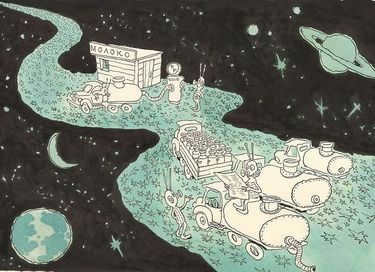
Unlike Western astronomers, Eastern sages view the Milky Way not just as a rational phenomenon, but as a symbolic representation of life’s journey and the path of the warrior. They understand that milk, being the first sustenance for a human being and the last thing that blinds their eyes in death, holds great significance. The name “Milky Way” itself calls upon all intelligent mammals to traverse its winding path amidst the stars. Mammals, being the pinnacle of creation, are closely associated with milk. Furthermore, the pure white color of milk symbolizes the purity of nirvana.





